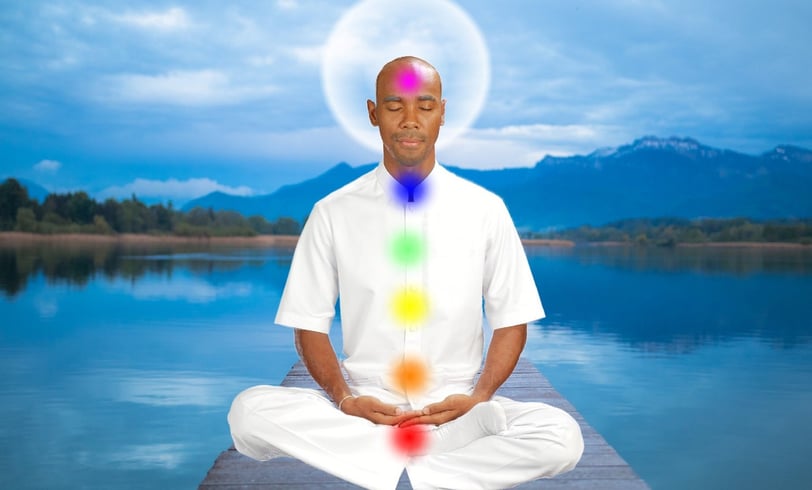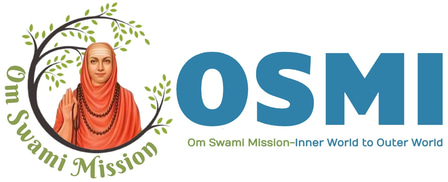The energy channels - IDA, Pingala, and Sushumna
To explore the idea of Ishta devata is to remain connected to the notions of maya and dualism. However, having your own Ishta devata is perfectly acceptable; it’s akin to having a favorite person. For those who embrace this belief, the Ishta devata resides just below the heart chakra. As your heart chakra opens up, your affection for your Ishta devata deepens.


The anahat chakra is recognized as the center where the soul resides, intertwined with our karmas, and is often referred to as jiva or jivatma. Our current focus is on the Supreme Brahman, the ultimate authority governing the entire universe. In Hinduism, there exists a concept known as Ishta devata, which we have previously explored. Ishta devata represents the form of God that resonates most with you. Personally, I do not subscribe to the idea of Ishta devata. Embracing this concept may lead to a continued attachment to maya and dualism. However, there is no harm in having your own Ishta devata; it is akin to having a favorite person. For those who believe in this, the Ishta devata is situated just below the heart chakra. As your heart chakra expands, so too does your love for your Ishta devata. This connection fosters a strong bond with your Ishta devata, who watches over you. It is important to note that Ishta devata is localized, whereas Brahman is omnipresent. The sound of OM resides within the heart chakra, linked to the three gunas, with rajo guna being the most prominent here. From this chakra, you can begin to refine your focus inward. The power of manifestation initiates at this point, and the early signs of bliss become apparent. You may find yourself experiencing heightened emotions, feeling the urge to cry or laugh in solitude, yet holding back. You might also notice goosebumps frequently, and strangers may take a second glance at you. Animals tend to be non-threatening in your presence. However, it is essential to dedicate ample time to meditating on this chakra. At this stage, it is crucial to grasp the true meaning of meditation. Meditation involves directing your attention toward a specific subject and does not imply neglecting other tasks while in a meditative state. Your understanding of meditation may have evolved up to this point, but from the heart chakra onward, it is vital to maintain a continuous meditative state.
Your subconscious mind is capable of managing your ongoing meditation, while your conscious mind can focus on daily tasks. We have already explored the concepts of the conscious and subconscious mind in depth. Additionally, we will delve into a more advanced study of the mind later on. However, we have yet to conduct a thorough examination of the ida and pingala nadis in relation to the spinal cord. It is believed that these two nadis spiral around the spine like a serpent. They intersect, encircling the chakras, and extend from the coccyx to the skull. The coccyx features three openings: one for the central canal of the spinal cord, which is the pathway for the ascent of kundalini, and the other two for ida and pingala, positioned on either side of the central canal. These nadis are linked to the spinal nerves that traverse the spinal cord, forming subtle centers of consciousness known as chakras, which we are currently discussing. These centers are also connected to various glands and organs. Together with thousands of other nadis, ida and pingala supply vital life force to different parts of our body. The term nadis encompasses nerves, arteries, and veins. While most nadis exist in a physical form, only a small fraction exists in a subtle form. The nervous system gathers information from our sensory organs and relays responses and solutions for action. Although subtle nadis do not manifest in a tangible way, they possess greater power than their physical counterparts. These subtle nadis function similarly to cell phone towers; although the communication link between a tower and a phone is invisible, the clarity of the conversation remains high. This principle applies to subtle nadis as well, as their energy transmission is exceptionally potent. Among these subtle nadis, ida and pingala are particularly significant, originating from the muladhara chakra and concluding at the ajna chakra, also known as the third eye chakra.
The nadi that begins on the right side of the coccyx ends at the left nostril, while the one starting from the left side terminates at the right nostril. In addition to reaching the nostrils, these nadis connect to the central canal of the spinal cord at the ajna chakra, also known as the third eye chakra. The ida nadi generates warmth in the body, whereas the pingala nadi has a cooling effect. These nadis function automatically, adjusting to the body's needs. When they malfunction, it can lead to an increase in body temperature, resulting in fever. These two nadis regulate the left and right sympathetic nervous systems. The kundalini energy is meant to rise solely through the central canal of the spinal cord, referred to as sushumna. If this energy travels through the ida and pingala nadis, it will not activate any chakras beyond the base chakra, leading to energy congestion. This congestion can result in a nervous breakdown due to the energy being unable to ascend properly. To prevent the kundalini from rising through these nadis, practices like mula bandha and specific types of pranayama are beneficial.
